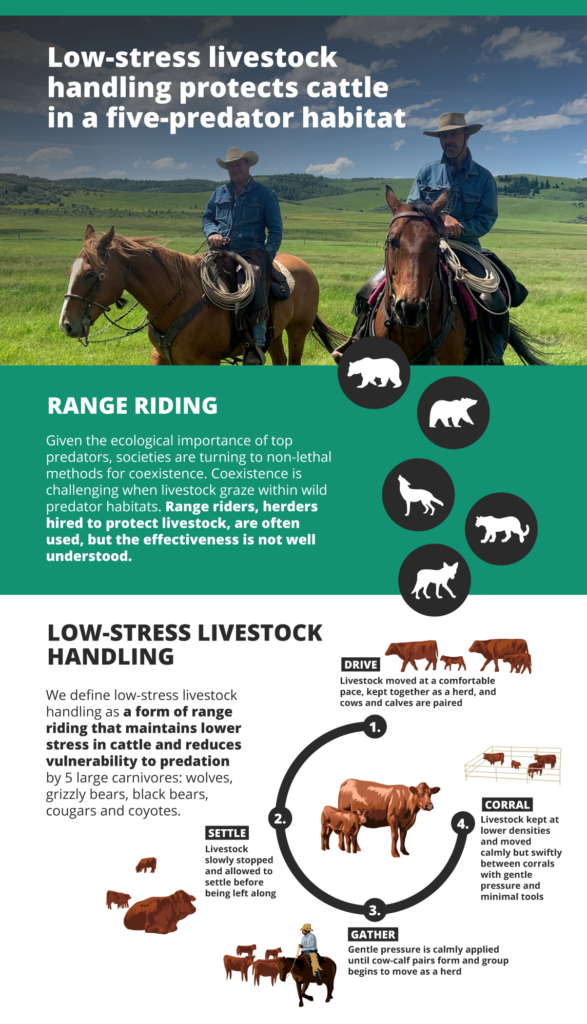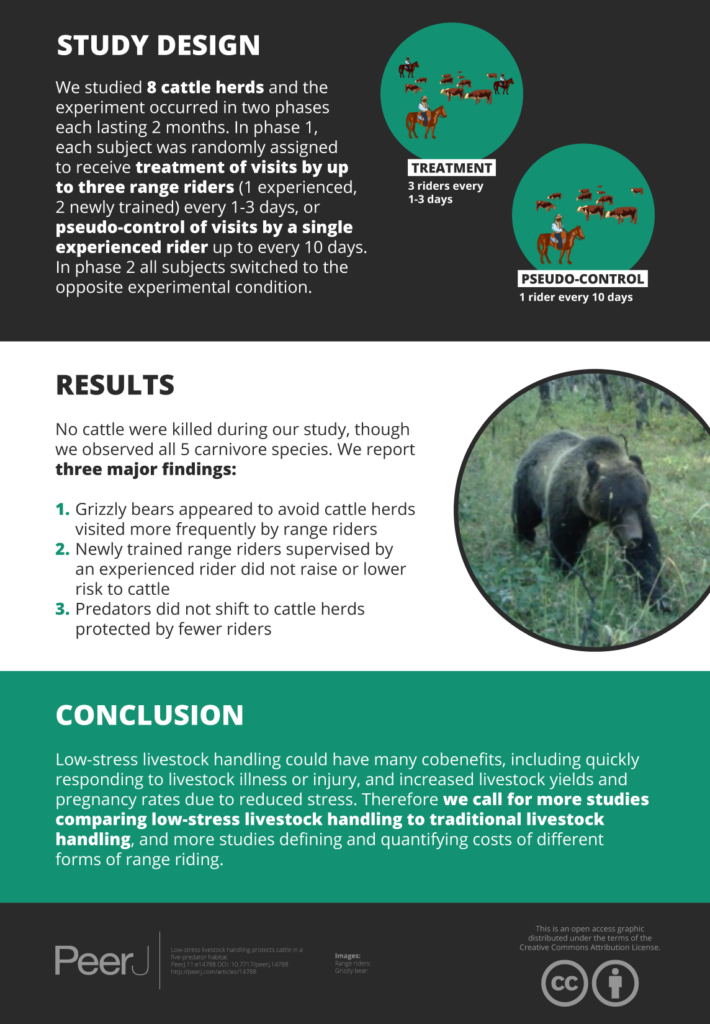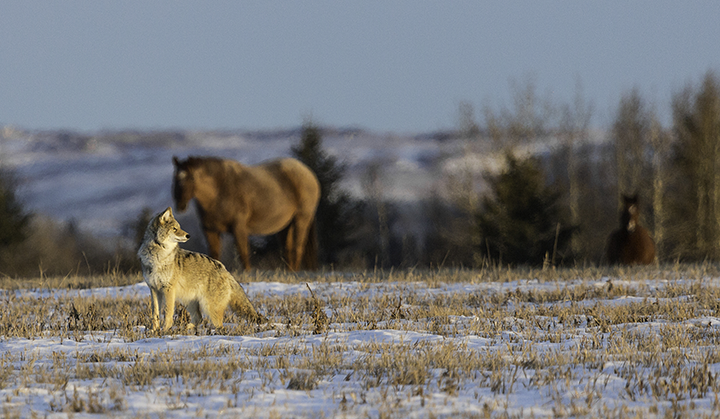Early results of new research show promising potential of ‘range riding’ in keeping wildlife and cattle safe in southern Alberta
February 2023 update: This research is now published! View the full paper by Louchouarn et al.: Low-stress livestock handling protects cattle in a five-predator habitat
The lumbering, munching cattle that you see dotting the foothills aren’t the only animals around, especially in places like southern Alberta that border the Rocky Mountains.
Grizzly bears, cougars, coyotes, wolves and other wildlife have long roamed these landscapes in search of food and mates, and to access important habitat in the Yellowstone to Yukon region. With people living and making their livings in these same places, we must also take on the important responsibility of finding ways to live alongside these animals.
Research plays a role in understanding this relationship better. PhD candidate Naomi Louchouarn is taking that work on.
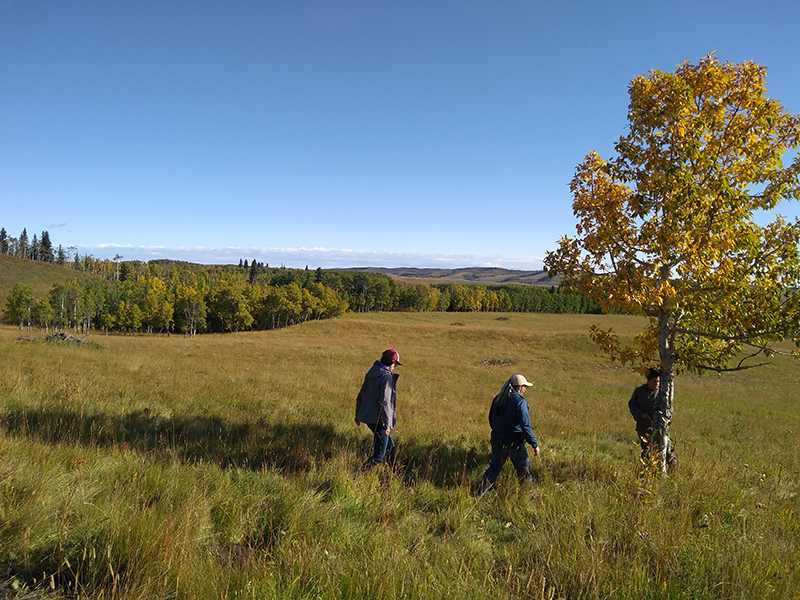
Naomi is a researcher with the University of Wisconsin’s Carnivore Co-existence Lab and one of Y2Y’s 2019 partner grantees. She studied one Alberta rancher’s ‘range riding’ efforts to protect cattle from predation by carnivores such as wolves and cougars — without killing the carnivores.
“There’s this deep-seated conflict between the cowboy and the wolf. It’s everywhere. And it’s been around a long time,” said Naomi in this Jan. 8 CBC article.
Keeping carnivores, cattle and people safe through no-kill coexistence methods is becoming more common across ranches in places such as Alberta, Idaho and Montana.
However, it doesn’t have to be that way. Keeping carnivores, cattle and people safe through no-kill coexistence methods is becoming more common across ranches in places such as Alberta, Idaho and Montana.
In 2019, Naomi and the Carnivore Co-existence Lab started working with Joe Engelhart, a rancher at the Spruce Ranching Co-op near Nanton, Alberta, on a pilot project that looked at the efficacy of a range rider’s efforts in reducing conflicts.
How can range riding help keep cattle and wildlife safe?
Range riding comes in many forms. Generally, a range rider’s job is to move in and around a ranching landscape, usually by horseback, during grazing season to help prevent wolves and other large carnivores from hunting cattle.
In this case, Naomi studied cattle-focused range riding — meaning that the riders are there to support husbandry practices, which helps to reduce the number of livestock attacks.
According to Naomi, range riding is effective not only through the presence of riders, but because they know what signs of wildlife to look for on the landscape and understand their cattle’s behavior. This means ensuring cattle are managed proactively — always fed, moved, etc. — in a way that minimizes stress, and taking action to calm the herd down when needed.
A wolf’s hunting technique, for instance, usually relies on the cattle herd splitting up, exposing calves and other individual animals. The more the herd is calm and sticks together, the less vulnerable they are to being attacked.
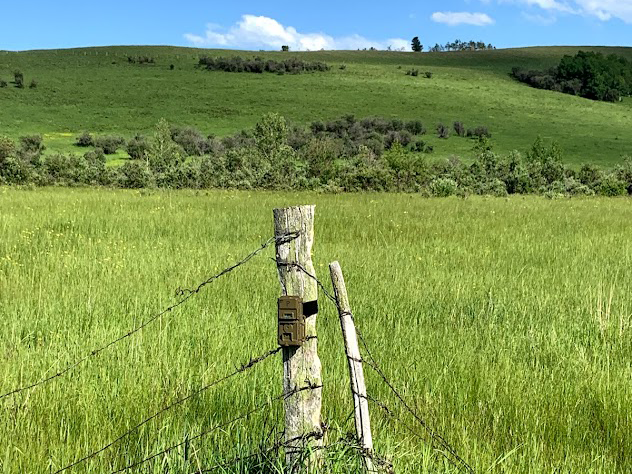
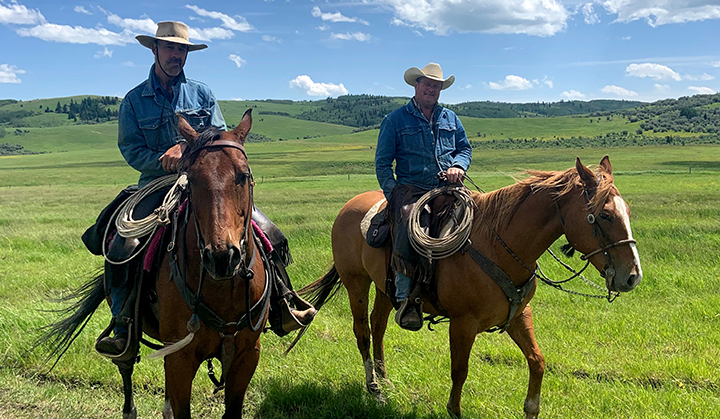
Another important part of effective range riding is the rider’s experience with the landscape.
“One of our greatest lessons from this field season is that knowledge of the landscape takes a great deal of time,” adds Naomi. “Joe, who has worked on this land for nearly 30 years, has a knowledge that lends itself to his success as a range rider, and which we suspect is very important to his ability to deter predators from his livestock.”
The hope was that through these pilot and future seasons of the project, they could not only determine the effectiveness of range riding, but also define this method of range riding that works and can be used in other regions where predators and livestock must share space. That’s exactly what they have done!
“People will and should be able to make their livings in this region while sharing space with wildlife,” says Naomi. “It’s imperative that methods promoting responsible practices in carnivore country are developed and supported by strong science.”
“People will and should be able to make their livings in this region while sharing space with wildlife. It’s imperative that methods promoting responsible practices in carnivore country are developed and supported by strong science.”
PhD candidate Naomi Louchouarn
As the study progressed, Naomi gathered remote camera footage, and data on bears, wolves, coyotes, cougars and other predators’ tracks, scat, fur and other signs in and around Spruce Ranching.
Now, after nearly three years, the study’s preliminary results show that the range riding efforts are working! From July to October 2020, no attacks or kills of cattle were observed.
“Trying to prevent conflicts by killing large carnivores isn’t proven to be cheaper, more effective or a long-term solution,” says Naomi. “What we observed during this research is that these wildlife species were around, living their lives on the landscape and were not attacking cattle — that’s a big deal.”
Steps to help wildlife and people thrive
An important part of this project and many coexistence projects is to help ensure wildlife, such as the diverse suite of large carnivores that are native to many areas in the Yellowstone to Yukon region, can get where they need to go. This supports their populations’ genetic diversity and their ability to keep moving as the climate changes.
We are proud to have been part of supporting this project’s pilot in 2019. Each “small” step is one towards a better future for wildlife and people, even if it takes time.
The Yellowstone to Yukon mission progresses because of collaboration. Over the past five years (2018-2021), we have leveraged more than $58,000 in partnership with others for important coexistence projects and research, including this one. These on-the-ground projects complement our efforts and mobilize work that we wouldn’t be able to do on our own, which is why we are thrilled to continue with our partner grants program — one that has been running since 1998.
Additional reading:
Louchouarn NX, Treves A. 2023. Low-stress livestock handling protects cattle in a five-predator habitat. doi.org/10.7717/peerj.14788
